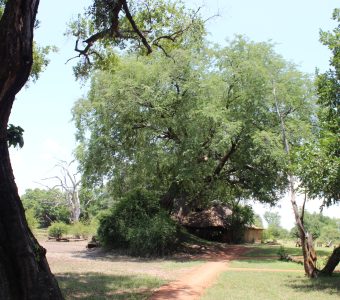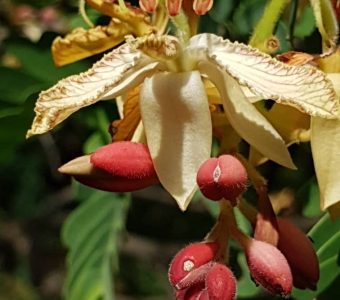

Botanical Name: Tamarindus indica L.
Common Name: Tamarind
Plant Family: Caesalpinoideae
Origin: Probably Africa and the Far East
References: Coates Palgrave p.330, Storrs 1 p.193-194, van Wyk 1 p.426. S.A. No. 206,1, Zimb. No. 258
Description: A medium to large evergreen tree, usually found in riverine areas and on termite mounds at low altitude. It has a pale, rough bark and spreading, drooping branches. The leaves are grey-green and compound with alternate leaflets. The flowers are pale yellow or pinkish small spikes. The fruit is a rusty-brown, curved, velvety pod with constrictions between the seed. The seeds are held within a sweet tasting, sticky pulp.
Features of Particular Interest: Fruit.
Height and Spread: 20-25m high, 5-10m spread.
Periods of Interest:
Leaf: All year round.
Flowering: November to March.
Fruiting: June to August.
Cultivation
Soil and Moisture: Prefers heavier, fertile soils. Plant seedlings out in full sun with regular watering.
Aspect: Well adapted to a variety of different habitat sites.
Hardiness: Tolerant of cold and dry conditions when established.
Maintenance and Pruning: No special requirements.
Propagation: Place seed under a thin covering of planting medium and water regularly.
Problems and Drawbacks: Germination and initial growth can be difficult but hardy once established.
Use and Associated Planting: One of Africa’s most important indigenous fruit trees. The pods are much favored by a whole gamut of birds and animals from parrots to baboons and elephants, and by humans. There is evidence of Tamarinds were traded throughout the old world from 400BC as a form of date and condiment. It is now grown commercially as an export fruit in the West Indies and India.
